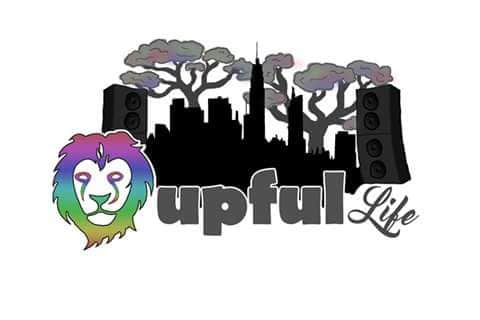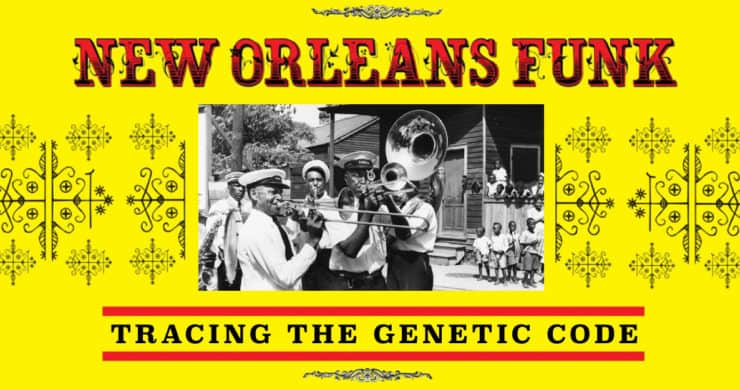Tracing The Genetic Code Of New Orleans Funk Music (B.Getz on L4LM)
New Orleans, Louisiana, is first and foremost a port town. Originally owned by the French, the Crescent City was where many people of color were brought from the West Indies as a part of the slave trade. Many of these people came from Haiti and brought with them the culture of Voodoo, and with that, its drums and music.
New Orleans was among the first parts of the United States to develop a strong African-American artistic culture leading to the invention of jazz in the early 1900s. Jazz may have been born in NOLA at the turn of the century, but by the 1950s, the music of choice in New Orleans was rhythm & blues. During this period, local R&B talent topped the national charts with songs like Lloyd Price’s “Lawdy Miss Clawdy”, Fats Domino’s “The Fat Man”, and Lee Dorsey’s “Working in the Coalmine”.
Since the beginning of the century, a main feature of New Orleans’ jazz has been the jazz funeral marching bands, also known as second lines. In its primary sense, a “second line” refers to an African-American processional form first established in New Orleans in the late 1800s. Somber brass bands accompanying a coffin on burial are joined by a second line of dancers and drummers, which would turn the event into a exaltation of the “spirit cutting free from Earth”. This treasured tradition is is rooted in African customs, and remains strong in New Orleans to this day.
The backline drums play a syncopated style that is neither on the beat nor the off-beat, and is commonly referred to as “second line”. In a 1975 interview with Downbeat magazine, the now-legendary Dr. Johnexplains the fine distinction between ‘second-line’ and the Afro-Cuban rhythms that predate it:
See, in the basic Afro Cuban music, one is established as the beat and everything after that is basically free. In Latin music one is the hit and is always established and everybody plays around it. But in second-line, the beat is four/one, and there are two accents, as opposed to the one in Latin. (May 22, 1975, Downbeat)
The “second-line” rhythm formed the root for the basic NOLA funk backbeat—a beat which can be heard in any number of rock, R&B, and pop recordings. The “second-line” rhythmic tradition entered the culture through Professor Longhair (also known as Fess) and ‘Fats’ Domino, moving onward through Chris Kenner and Ernie K-Doe. By the end of the sixties, the second-line beat had traveled up out of New Orleans to other regions. For example, Motown producers up in Detroit, Michigan, had unceremoniously jacked a bunch of Bayou-birthed beats for some of its most beloved chart hits; most notably on The Supremes “When the Lovelight Starts Shining Through His Eyes”, where Benny Benjamin jacks the iconic drum pattern from the now-ubiquitous “Iko Iko,” a song made popular by The Dixie Cups in 1965, but written by New Orleans own James “Sugar Boy” Crawford.
The roots of funk run deep, sprawling into time-honored traditional rhythms of the Bayou. New Orleans drummers Charles Williams and Leo Morris (who, upon his conversion to Islam, changed his name to Idris Muhammed) took the second-line groove into the funky jazz world, where Muhammed powered a whole generation of soul jazz/rare groove recordings on iconic labels such as Blue Note, Prestige, and Fantasy. But the “second-line” groove still found its crystallized essence in swamp funk—this was the music of the renowned native New Orleans “R&B” bands like The Meters, The Neville Brothers, Dr. John, and Chocolate Milk.
As explained in a 2013 article in Ethnomusicology Review, “Strictly Second-Line: Funk, Jazz & the New Orleans Beat“, by Benjamin Doleac,
In 1976, filmmaker Maurice Martinez asked Mardi Gras Indian Chief Jake Millon to describe the characteristic rhythm that underlies the music of black New Orleans. “Some people call it funk,” Millon replied, “but to us, it’s strictly second line.”
“Funk” has several different meanings in American popular discourse, but since the 1970s it has largely connoted a heavily syncopated, groove-centered style of African-American music. “Second line,” on the other hand, refers to the rhythms of a black parading tradition originating in nineteenth-century New Orleans. Since the 1960s, when James Brown essentially invented funk music by building on rhythms introduced to him by two New Orleans-schooled drummers, the relationship between “second line” and “funk” rhythms has been increasingly symbiotic.
The center of swamp-funk production was songwriter/producer Allen Toussaint and his engineering partner Marshall Sehorn at their Sea-Saint recording studios. Toussaint had made his bones producing and writing hits for the Minit label, big songs for local legends like Ernie K-Doe, Bennie Spellman, and Lee Dorsey. The band on a great deal of these sessions included drummer Joseph “Zigaboo” Modeliste, bassist George Porter, guitarist Leo Nocentelli, and pianist Art Neville, though it wasn’t until the late 1960s that these four officially formed a band, The Meters.
Their stripped-down sound minimized the need for solos and vocals in favor of locking into the monster groove. The Meters epitomized the unfailing simplicity of an authentic New Orleans rhythm. Their first two singles, “Sophisticated Cissy” and “Cissy Strut”, became sizable hits. The Meters went on to record a series of positively brilliant albums, including the pioneering Look A Py-Py, and 1974’s Rejuvenation. The true measure of their importance lies in their distinctive drum and bass combinations. Zig’s rock solid trading off with Porter’s crunkafied bass grooves have stood the test of time.
[Video: FunkensteinJr]
In the fumes that followed The Meters came the eight-piece band Chocolate Milk. The band offered a more colorful sound that featured a horn section and group vocals, but which nonetheless was trafficking in that southern-fried deep funk. Another Sea-Saint studio squad, Chocolate Milk featured brothers Ernest Dabon (bass) and Robert Dabon (piano), drummer Dwight Richards and brother Frank Richard on vocals, with Joseph Smith III (trumpet), Amadee Castenell Jr. (Sax), Mario Tio (guitar) andKenneth Williams (percussion). Chocolate Milk had a run of stank-dirty LPs, including We Are In This Together, but their most renowned release remains 1975’s Action Speaks Louder Than Words. This landmark album included slabs of psychedelic funk like “People”, “My Mind Is Hazy”, and “Time Machine,” along with the celebrated title track.
Throughout the sixties and seventies, other artists like Mac Rebennack (a.k.a. Dr. John), The Neville Brothers (a band composed of Meters organist Art “Poppa Funk” Neville and his brothers—saxophonist brother Charles, vocalist Aaron, and percussionist and ex-Meters vocalist Cyrille), and a cavalcade of Crescent City underground legends like Eddie Bo, Chuck Carbo, and Earl and Willie (“Willie Tee”) Turbinton released a steady stream of country, soul, and blues variations on the second-line rhythms.
For a blues adventure on the idea, check out Dr. John’s “I Walk On Gilded Splinters”. For the quintessential second-line soul, play Aaron Neville‘s luminescent “Hercules”. For the pure gut-bucket funk, Eddie Bo’s “Check Your Bucket” is your go-to groove.
As disco dealt a death knell to American R&B in the late seventies, the contributions to the development of funk made by the Sea-Saint axis is impossible to overestimate. New Orleans second line is the essence of funk, and without Allen Toussaint and Marshall Sehorn, without the New Orleans martial drumming of Idris Muhammed, without The Meters, Chocolate Milk, and The Neville Brothers, there would be no jazz-funk nor hip-hop. The hoochie-coochie sweat of New Orleans, that voodoo crunk of Afro-Caribbean boogie-woogie, still stanks up every jam with some sliver of that classic solid four/one beat. This particular legendary NOLA legacy lives on most proud and loud in the latter day sons of the Bayou swamp funk—Galactic, Dumpstaphunk, Naughty Professor, and beyond.

